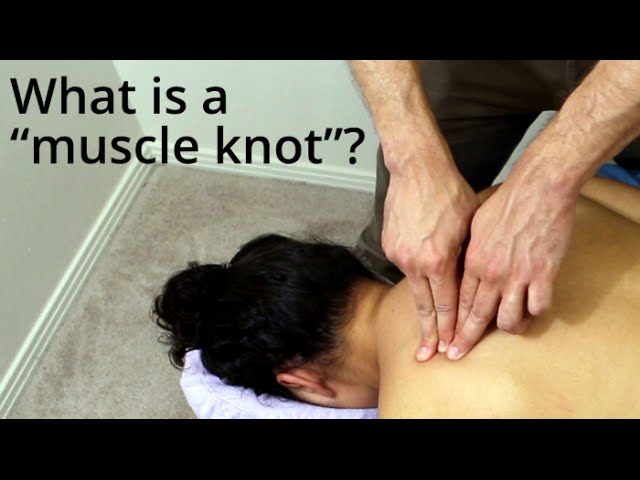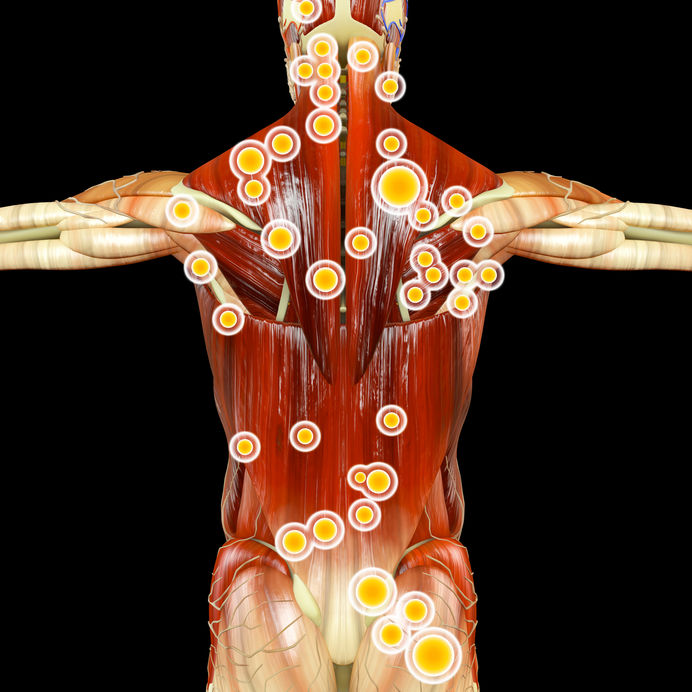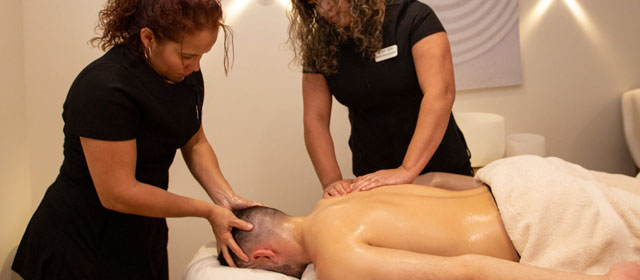Hey there! Have you ever wondered about what constitutes inappropriate touching by a massage therapist? Well, you’ve come to the right place! Here at our blog, we are passionate about all things related to massage, and we’re here to shed some light on this important topic.
In our upcoming article, we’ll dive deep into the subject of inappropriate touching by massage therapists. We’ll discuss what actions or behaviors are considered inappropriate, how to recognize them, and most importantly, what you can do if you ever find yourself in a situation where you feel uncomfortable during a massage. It’s a crucial topic to address, as everyone deserves a safe and respectful massage experience.
So, if you’re curious to learn more about this delicate matter and gain some valuable insights on how to navigate your massage sessions with confidence, be sure to keep an eye out for our upcoming article. We’re here to provide you with the information and guidance you need to ensure a positive and enjoyable massage experience every time. Stay tuned!
Understanding inappropriate touching by massage therapists
In the world of massage therapy, professional boundaries and ethical conduct are of the utmost importance. However, there are occasions when these boundaries are crossed, resulting in inappropriate touching by massage therapists. In this article, we will delve into what constitutes inappropriate touching, the impact it has on clients, preventive measures and regulations, reporting and addressing such behavior, fostering ethical conduct within the industry, establishing trust and communication, understanding consent and boundaries, the psychological profile of massage therapists involved in inappropriate touching, and the legal framework surrounding this issue.
The definition of inappropriate touching in the context of massage therapy
Inappropriate touching refers to any physical contact or behavior by a massage therapist that is unwarranted, non-consensual, or beyond the scope of the therapeutic treatment. It may involve touching sensitive or intimate areas of the body without a legitimate therapeutic purpose or without obtaining the informed consent of the client. Inappropriate touching can manifest in various forms, from subtle gestures to overt actions, and it is crucial to be able to recognize and address such behavior.
Types of inappropriate touching by massage therapists
Inappropriate touching can encompass a range of behaviors, some more obvious than others. It is important to note that boundaries differ from person to person, and what may be inappropriate for one individual may not be for another. However, there are generally accepted guidelines within the massage therapy community that dictate what is considered appropriate and inappropriate conduct. Some examples of inappropriate touching include:
- Touching or massaging intimate areas of the body without valid therapeutic reasons or consent.
- Touching or massaging areas that were not previously discussed or agreed upon during the intake process.
- Engaging in excessive or prolonged contact with sensitive areas of the body, such as the breasts or genitals.
- Making sexually suggestive comments or engaging in inappropriate conversation during the session.
- Using draping techniques that do not adequately cover the client’s body, violating their privacy and comfort.
- Touching the client in a way that feels exploitative, uncomfortable, or malicious.
Recognizing signs of inappropriate touching during a massage
It is essential for both clients and fellow massage therapists to be vigilant and able to recognize the signs of inappropriate touching during a massage. Some indicators that inappropriate behavior may be occurring include:
- The therapist repeatedly straying into intimate areas of the body without a justifiable therapeutic purpose.
- The therapist’s touch feels overly sensual or sexual in nature.
- The therapist makes inappropriate comments or engages in suggestive conversation.
- The client feels uncomfortable, violated, or unsafe during the session.
- The therapist dismisses or ignores the client’s requests for adjustments in pressure or technique.
- The therapist does not provide adequate draping or fails to maintain the client’s privacy.
The impact of inappropriate touching on clients
The consequences of experiencing inappropriate touching by a massage therapist can be profound and far-reaching. The effects can be both immediate and long-lasting, affecting the client emotionally, psychologically, physically, and even societally.
Emotional and psychological effects of inappropriate touching on clients
Experiencing inappropriate touching can lead to a wide range of negative emotional and psychological outcomes. Clients may feel violated, humiliated, and betrayed by the person they trusted to provide therapeutic care. They may experience significant distress, anxiety, or depression as a result of the incident. Trust issues can arise, making it difficult for clients to seek future massages and hindering their ability to relax and fully enjoy the therapeutic benefits of massage therapy.
Physical effects of inappropriate touching on clients
In addition to the emotional and psychological impact, inappropriate touching can also have physical consequences on clients. It can cause physical discomfort, pain, and even injury. The stress and trauma associated with such experiences may manifest in physical symptoms, such as muscle tension, headaches, and digestive issues. The overall well-being and health of the client can be compromised, leading to a decline in their quality of life.
Societal ramifications of inappropriate touching by massage therapists
Instances of inappropriate touching undermine the reputation and credibility of the massage therapy profession as a whole. They perpetuate negative stereotypes and contribute to public mistrust in the industry. Additionally, they can have legal and financial repercussions for individual massage therapists, as clients may choose to take legal action, file complaints, or post negative reviews online. This not only impacts the reputation of the therapist but can also negatively affect their livelihood and ability to practice.
Preventive measures and regulations
To prevent instances of inappropriate touching and promote a safe environment for clients and practitioners alike, several preventive measures and regulations are in place within the massage therapy industry.
Establishing clear boundaries and guidelines for massage therapists
Massage therapists should be well-versed in professional boundaries and adhere to established guidelines set forth by reputable organizations and regulatory bodies. It is important for therapists to communicate these boundaries clearly to clients from the initial intake process through to the duration of the session. This ensures that both parties are aware of what is expected and acceptable behavior during a massage.
Licensing and certification requirements for professional massage therapists
Licensing and certification requirements vary from jurisdiction to jurisdiction, but they are an essential part of ensuring that massage therapists meet specific standards of education, training, and ethics. By obtaining a license or certification, massage therapists demonstrate their commitment to upholding professional conduct and maintaining the trust of their clients.
Creating a safe and respectful environment for clients
Massage therapy clinics and spas should prioritize creating an environment that promotes safety and respect for all clients. This includes enforcing policies that prohibit inappropriate behavior, ensuring proper draping techniques are used, providing private and secure spaces for treatments, and regularly training staff on professional conduct and ethics. By fostering a culture of accountability and respect, clients can feel confident in their choice of massage therapist and trust that their well-being is respected and protected.
Reporting and addressing inappropriate touching
Despite preventive measures, instances of inappropriate touching may still occur. It is crucial for clients and witnesses to take appropriate steps to address and report such behavior to protect themselves and others.
Steps to take when experiencing or witnessing inappropriate touching by a massage therapist
If a client experiences or witnesses inappropriate touching, it is important to take action promptly. The following steps can be taken:
- Trust your instincts: If something feels off or uncomfortable during a massage, listen to your intuition.
- Document the incident: Take note of the details, including the therapist’s name, location, date, and time of the session, as well as any specific actions or comments that made you feel uncomfortable.
- Cease contact and seek support: End the session immediately if you feel unsafe and seek support from friends, family, or professionals to help you process the experience.
- Report the incident: Contact the appropriate regulatory body or licensing board in your jurisdiction to file a complaint. Provide them with the documented details to aid in their investigation.
- Consider legal action: If the incident warrants legal action, consult with an attorney who specializes in massage therapy malpractice or sexual misconduct cases.
Support systems for victims of inappropriate touching
Victims of inappropriate touching may experience a wide range of emotions and trauma. It is crucial for them to have access to support systems that can help them navigate the aftermath of such experiences. Therapists should be aware of local resources, such as counselors, therapists, or support groups, that can provide the necessary care and guidance.
Professional repercussions for massage therapists found guilty of inappropriate touching
Massage therapists found guilty of inappropriate touching may face severe professional repercussions, including license revocation, loss of employment, and damage to their professional reputation. Legal consequences may also include fines, probation, or even imprisonment, depending on the severity of the offense and the laws in the jurisdiction.
Fostering ethical conduct within the massage therapy industry
To ensure the highest ethical standards are upheld within the massage therapy industry, it is essential to promote accountability, transparency, ongoing education, and the importance of professional associations.
Promoting accountability and transparency within the profession
Massage therapists should be held accountable for their actions, and maintaining transparency is crucial in doing so. Professional associations and regulatory bodies can play a vital role by establishing codes of conduct, providing resources for continuing education on ethics, and facilitating a platform for reporting and addressing complaints within the industry.
Ongoing education and training on ethics for massage therapists
Ethical conduct should be an ongoing commitment for massage therapists. Continuing education and training on ethics are essential to ensure therapists stay informed about professional boundaries, consent, and their responsibilities as practitioners. By making ethics education a requirement for license renewal and professional development, therapists will be better equipped to uphold the highest standards of care and conduct.
Importance of professional associations in upholding ethical standards
Professional associations play a vital role in fostering ethical conduct within the massage therapy industry. They often set guidelines and standards of practice, provide resources for continuing education, and offer support to both clients and therapists. By actively participating in professional associations, massage therapists can stay connected with their peers, access valuable resources, and contribute to the development and maintenance of ethical standards.
Establishing trust and communication with massage therapists
Establishing trust and open communication with massage therapists is essential for ensuring a positive and respectful experience. Clients can take certain steps to foster a healthy therapeutic relationship and set clear boundaries.
Effective communication with massage therapists to ensure comfort and boundaries
Before the massage begins, take the time to discuss any specific concerns, medical conditions, or boundaries you may have with the therapist. This conversation will help establish mutual trust and ensure that the therapist understands and respects your needs.
How to find reputable and trustworthy massage therapists
When searching for a massage therapist, it is important to do your due diligence to find reputable and trustworthy professionals. Consider the following tips:
- Research and read reviews: Look for therapists who have positive reviews and testimonials from clients.
- Check credentials: Ensure that the therapist is licensed or certified and inquire about their education and training.
- Ask for recommendations: Seek recommendations from friends, family, or healthcare professionals who have had positive experiences with massage therapists.
- Trust your instincts: Pay attention to how you feel during the initial consultation and trust your gut. If something feels off, it may be best to look for another therapist.
Setting realistic expectations for a massage session
To ensure a positive experience, it is essential to set realistic expectations for a massage session. Understand that massage therapy is primarily a therapeutic treatment aimed at promoting relaxation, reducing muscle tension, and improving overall well-being. It is not a substitute for professional medical care, nor should it be expected to fulfill personal or emotional needs. By managing expectations, clients can avoid potential misunderstandings and maintain a clear focus on the therapeutic benefits of massage.
Understanding consent and boundaries in massage therapy
Consent and boundaries are fundamental principles of ethical massage therapy practice. It is important for both therapists and clients to understand and respect these principles.
The importance of obtaining informed consent from clients
Informed consent is the cornerstone of ethical massage therapy. It requires clear communication between the therapist and client regarding the nature, scope, and purpose of the treatment. Consent should be obtained before the session begins and should involve discussing the specific areas of the body to be addressed, the techniques to be used, and any potential risks or benefits. Clients have the right to revoke their consent at any time during the session, and therapists must respect and honor their boundaries.
Respecting clients’ right to establish boundaries during a massage
Clients have the right to establish their boundaries during a massage session. Whether it is requesting specific areas not to be touched, adjustments in pressure, or simply needing a break, massage therapists must respect and honor these boundaries. Therapists should always prioritize the comfort and well-being of their clients, creating an environment of safety and trust.
Navigating potential gray areas in consent and boundaries
In some situations, consent and boundaries may not always be black and white. There may be gray areas that need careful consideration and open communication. For example, some massage techniques may require accessing areas of the body that could be seen as sensitive or intimate. In such cases, it is essential for the therapist to clearly explain the need for the technique and obtain explicit consent from the client. Open dialogue and mutual respect can help navigate these potential gray areas and ensure that both parties are comfortable and informed throughout the session.
Psychological profile of massage therapists involved in inappropriate touching
While it is essential not to stereotype or generalize, it is worth exploring potential factors that may contribute to massage therapists engaging in inappropriate touching. Understanding these factors can help identify red flags and contribute to strategies aimed at prevention and early intervention.
Understanding potential factors contributing to inappropriate behavior
Several psychological, emotional, and social factors may contribute to inappropriate behavior by massage therapists. These factors may include unresolved personal issues, boundary violations in other areas of their life, a lack of awareness about professional boundaries, and even a history of trauma or abuse. It is important to emphasize that these factors do not excuse inappropriate touching but rather provide possible insight into the underlying causes.
Identifying red flags during the hiring process
The hiring process is an opportunity to identify potential red flags and ensure that massage therapists adhere to ethical standards. During interviews, it is crucial to ask questions about professional boundaries, expectations regarding client care, and how potential therapists handle situations involving discomfort or boundaries. Consistent and thoughtful answers will provide valuable insight into the therapist’s understanding and commitment to ethical practice.
The role of therapy and support to prevent misconduct
Providing therapy and support for massage therapists can play a crucial role in preventing misconduct and addressing any underlying issues that may contribute to inappropriate behavior. By encouraging therapists to seek therapy and mentoring, the industry can support its practitioners in maintaining their personal well-being, ethical conduct, and the ability to provide safe and therapeutic massage experiences.
The legal framework surrounding inappropriate touching in massage therapy
Inappropriate touching by massage therapists is not only an ethical breach but can also have legal implications. Laws and regulations exist to protect clients from sexual misconduct and ensure that offenders face legal consequences.
Laws and regulations regarding sexual misconduct in massage therapy
Numerous laws and regulations are in place to address sexual misconduct in massage therapy. These laws typically define what constitutes sexual misconduct, outline penalties for offenders, establish reporting and investigation procedures, and provide avenues for victims to seek legal recourse. It is crucial for both massage therapists and clients to be aware of the specific laws and regulations in their jurisdiction to facilitate appropriate action in case of misconduct.
Legal consequences for massage therapists found guilty of inappropriate touching
The legal consequences for massage therapists found guilty of inappropriate touching can vary depending on the severity of the offense, the jurisdiction, and the existing laws. Penalties may include fines, probation, loss of license, or even imprisonment. In addition to legal consequences, offenders may also face civil lawsuits and damage to their professional reputation.
The role of law enforcement in investigating and prosecuting cases
Law enforcement plays a significant role in investigating and prosecuting cases of inappropriate touching by massage therapists. Clients who have experienced inappropriate behavior should report the incident to their local law enforcement agencies, providing as much information as possible to aid in the investigation. Law enforcement agencies are responsible for gathering evidence, conducting interviews, and working in collaboration with regulatory bodies to ensure appropriate legal action is taken.
Conclusion
Inappropriate touching by massage therapists is a serious issue that can have profound and lasting impacts on clients and the massage therapy profession as a whole. It is essential for both clients and therapists to recognize the signs of inappropriate behavior, establish clear boundaries, foster a culture of accountability and respect, report instances of misconduct, and support victims. By prioritizing ethical conduct, open communication, and ongoing education, the massage therapy industry can uphold its reputation as a healing profession that values and respects the well-being of its clients.

This image is property of i.ytimg.com.





















